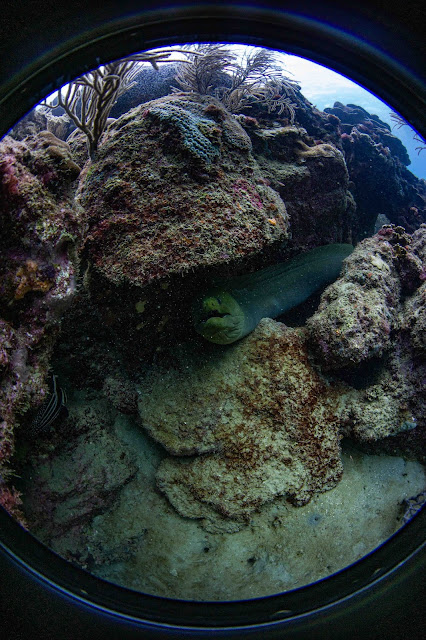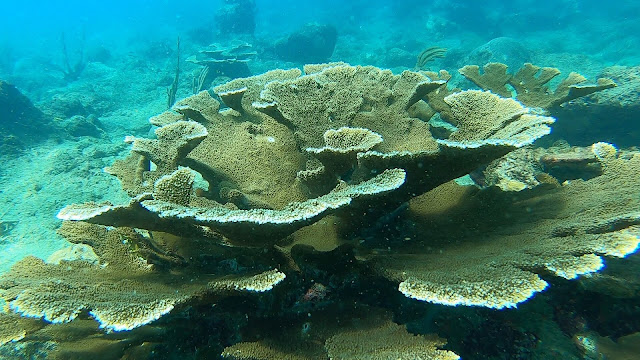Wildfires and Climate Change
Our
islands may have been paying closer attention to wildfires in recent dry
seasons with precautions to eliminate them. However, fires raging across Australia, California and Brazil have been so
numerous and extensive as to attract international attention. Dr Anjani Ganase
looks at what might be affecting these.
In recent years, there has
been a record number of wildfires occurring around the world, cycling through
the northern and southern hemispheres to match the seasons of hot and dry
conditions. For this year, Brazil lost over a million acres of rainforest to
wildfire in August, while three million hectares of land burned in the Siberian
wildfires affecting the air quality and health of numerous Russian cities. In
October, parts of central and southern Africa were also ablaze along with over
6000 fires burning across California over 250,000 acres of land. Today, parts of Australia continue to burn as
a result of over a hundred fires and over 300,000 acres being burned along the
southeast coast of Australia.
In some cases, these fires are
started naturally by lightning strike, but in many instances, they are the
result of human activities that occur either accidentally - such as faulty
power lines - or intentionally - farmers clearing lands for agriculture and
pastures. Regardless, the outcome is the same, we are rapidly losing our
natural stocks of biodiversity and carbon stores and exacerbating climate
change. The Australian Climate Council has recently released a brief directed
to the Australian government to definitively connect these severe fire
conditions to climate change; and urge the need to plan for emergency services
to counter the threats of wildfires; while ramping up the efforts to reduce
their carbon footprint in order to protect lives and livelihoods.
The recipe for a wildfire is
simple. All you need is heat (higher air temperatures), dry conditions (low
humidity), fuel (vegetation), and a spark.
 |
| South American wildfires 2019: The map above shows active fire detections in Brazil as observed by Terra and Aqua MODIS between August 15-22, 2019. NASA Earth Observatory images by Joshua Stevens, using MODIS data from NASA EOSDIS/LANCE and GIBS/Worldview, Fire Information for Resource Management System (FIRMS) data from NASA EOSDIS, and data from the Global Fire Emissions Database (GFED). Story by Adam Voiland, with information from Douglas Morton (NASA’s Goddard Space Flight Center). |
We all know that our planet’s
temperature is rising because of the greenhouse effect that results from carbon
emissions. This means that temperate and tropical forests will become hotter
and drier as more evaporation takes place. This loss of humidity makes the
vegetation more susceptible to fires. Wildfires have been highlighted because
they have become more frequent and severe in recent years; and will continue to
get worse as the climate continues to warm. One study has shown that globally, the
fire weather season has (on average) lengthened by 18 % over the last 34 years.
This equates to an increase by 25 % of vegetated areas that will be likely to
be impacted by the extended fire weather season annually (Jolly et al 2015).
Areas with significant increases in the length of fire season include several
parts of Africa, especially sections with a drier Mediterranean climate. Sections of the US that have also experienced
higher numbers wildfires and longer fire seasons, such as in the Rockies. The
Amazon rainforest has also had an increase of 33 days more in fire weather
season in the last 34 years.
“Our results extend these findings by demonstrating
that areas with the most significant change in fire weather season length occur
where not only temperature but also changes in humidity, length of rain-free
intervals and wind speeds are most pronounced.” – Jolly et al
2015
Future predictions in the
Intergovernmental Panel for Climate Change (IPCC), assessment report, confirm
that as global warming progresses, so will the threat of wildfires to nature
reserves and also to communities that reside in these areas. Climate models derived
from predictions of temperature and rainfall (or the prevalence of drought),
can indicate the moisture available in the soils of forested ecosystems. Thus,
the potential for a wildfire can be predicted (Liu et al 2010). Scientists have
predicted an increase in potential wildfires in the following continents: USA in North
America, South America, central Asia, southern Europe, southern Africa, and
Australia, owing to extensions in seasonal fire weather periods due to warmer
and drier conditions.
Most of these places will have shifts in conditions that would likely contribute
a moderate threat of fires year round, with a couple months (2 – 8 months) of
severe fire threats. While these are the predictions, the actual outcomes are
dependent on a lot more parameters, namely how the vegetation will recover or
shift, as a result of a burn and how this will shift future wildfire, as well
as how we treat with the situation. Our activities and the changes to our
land - deforestation and fragmentation
(building of roads and infrastructure through forested areas) - may exacerbate
the impacts of wildfires, while management plans to out fires and reduce
ignition may help.
The recovery and resilience of
vegetated ecosystems following a wildfire may also be impaired by climate
change (Stevens-Rumann et al 2017). Through long-term observations of forest regeneration over the
last several decades, one study found that the significant decline in moisture after
a fire (from 2000 to 2015 as compared to 1985–1999) slowed recovery of
seedlings and young vegetation (Stevens-Rumann et
al 2017). Forested areas with more fragmentation (more roads and barriers
cutting through the forest) showed even more limited recovery, and a tendency
to shift in ecology to grasslands.
Even more
insidious are the reinforcing effects of the fires themselves, in conjunction
with human activities. In areas adjacent to fire affected forests, or near
logging or deforestation, scientists have observed a significant reduction in
humidity. These drier conditions are less suitable for the younger trees and so
resulted in tree dieback. Human activities – fragmentation (roads), deforestation
(slash and burn agriculture or pasture), grass invasion following the fire and
climate change - will completely alter the natural ecology of the land and the
area of natural forest ecosystems undergoing this transition increases. We do
not know how these
altered ecosystems will respond to subsequent fire risk, not to mention the
livelihoods that depend on it; but scientists infer that more fire dependent
plant species may be likely to expand in these regions, especially as fire may
be more common in the future.
In Trinidad and Tobago, the
loss of our forests, through poorly managed land use, illegal quarrying, and
ill-managed housing developments, is a big issue. We still do not understand
the need to manage and conserve our natural spaces in order to protect us from
the impacts of climate change. Being an island nation makes us especially
vulnerable to limited recovery and resilience, as much of our replenishing vegetation
stock exists across a barrier of water (on the south American mainland), while
endemic species will be lost forever. A future of more severe and longer dry
seasons also means more fires – many exacerbated by construction (on hillsides)
and agriculture - that threaten the Main Ridge and Trinidad’s northern and
central ranges. The forests hold our natural stocks for food, clean water and
medicine. They help store carbon and reduce our carbon footprint. Trees and
forests keep us cool during the dry season, and minimize floods in
the wet season. We need to protect and conserve them.
References:
Liu, Y., Stanturf, J., &
Goodrick, S. (2010). Trends in global wildfire potential in a changing
climate. Forest ecology and management, 259(4),
685-697.
IPCC, 2014:
Climate Change 2014: Synthesis Report. Contribution of Working Groups I, II and
III to the Fifth Assessment Report of the Intergovernmental Panel on Climate
Change [Core Writing Team, R.K. Pachauri and L.A. Meyer (eds.)]. IPCC, Geneva,
Switzerland, 151 pp.
Rumann S., C. S., Kemp, K. B.,
Higuera, P. E., Harvey, B. J., Rother, M. T., Donato, D. C., ... & Veblen,
T. T. (2018). Evidence for declining forest resilience to wildfires under
climate change. Ecology Letters, 21(2), 243-252.
Jolly, W., Cochrane, M.,
Freeborn, P. et al. Climate-induced variations in global
wildfire danger from 1979 to 2013. Nat Commun 6, 7537
(2015) doi:10.1038/ncomms8537


